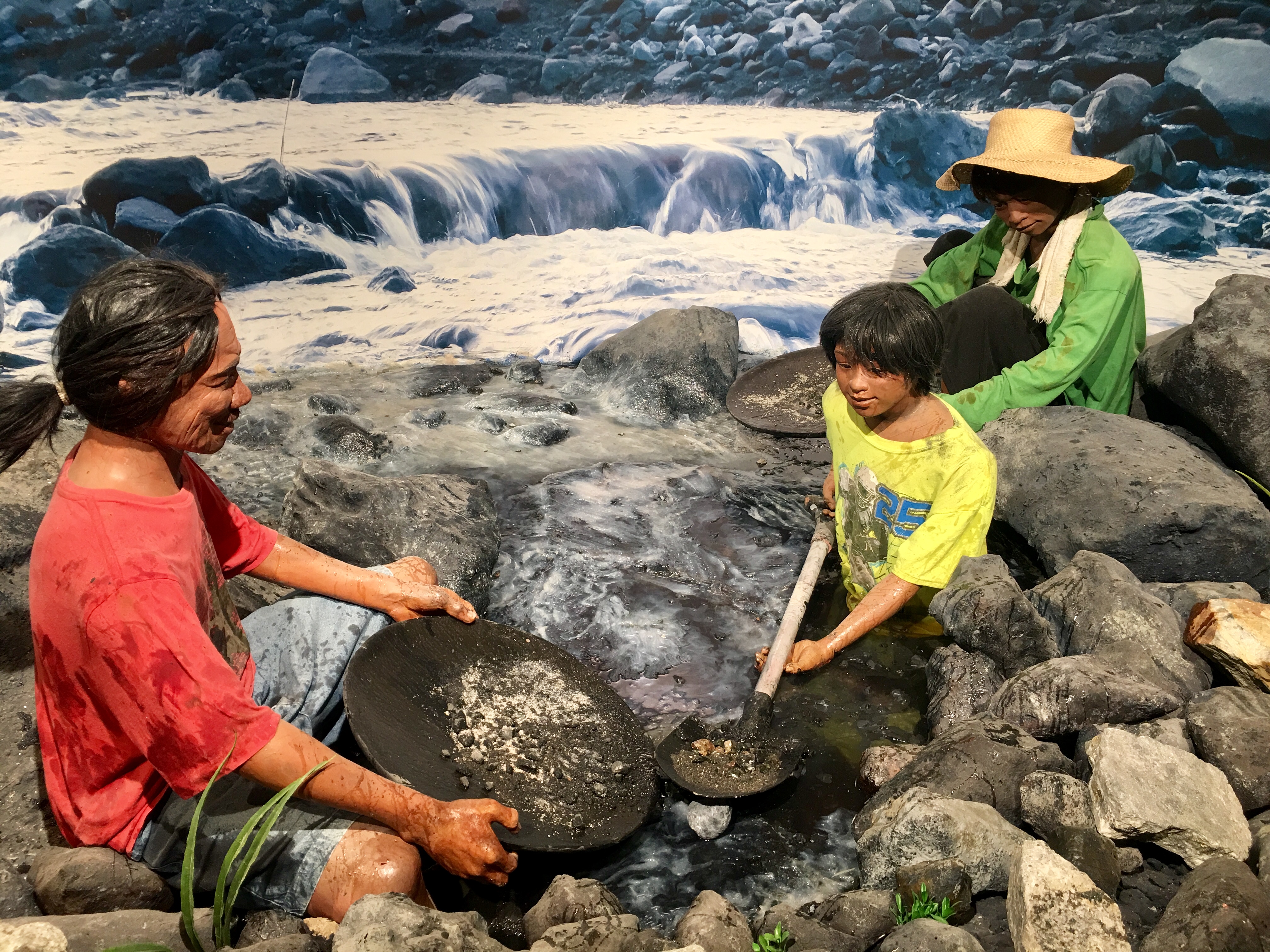Traditional Mining on:
[Wikipedia]
[Google]
[Amazon]
 Traditional mining, also known as old-school mining, is a
Traditional mining, also known as old-school mining, is a From Mapping to Mixing: Political Recognition of Expertise from the Allotment System to the Public Promotion of Manufactories
/ref>Introduction To Mining
/ref> Once the rock was heated by fire it was quenched with water to break it. Fire-setting was one of the most effective rock breaking methods until 1867 when Alfred Nobel invented dynamite. Traditional mining operations have created some of the largest handmade features on Earth, such as the
 Traditional mining, also known as old-school mining, is a
Traditional mining, also known as old-school mining, is a mining
Mining is the extraction of valuable minerals or other geological materials from the Earth, usually from an ore body, lode, vein, seam, reef, or placer deposit. The exploitation of these deposits for raw material is based on the economic via ...
method involving the use of simple manual tools, such as shovels, pickaxes, hammers, chisels and pans. It is done in both surface and underground environments. Until the early 1900s, traditional mining was widely used throughout the world. It is still a used mining method in some countries, including Colombia
Colombia (, ; ), officially the Republic of Colombia, is a country in South America with insular regions in North America—near Nicaragua's Caribbean coast—as well as in the Pacific Ocean. The Colombian mainland is bordered by the Car ...
and Peru
, image_flag = Flag of Peru.svg
, image_coat = Escudo nacional del Perú.svg
, other_symbol = Great Seal of the State
, other_symbol_type = Seal (emblem), National seal
, national_motto = "Fi ...
in South America and Niger
)
, official_languages =
, languages_type = National languagesMinecart
A minecart or mine cart (also known as a mine trolley or mine hutch) is a type of rolling stock found on a mine railway, used for moving ore and materials procured in the process of traditional mining. Minecarts are seldom used in modern opera ...
s are used to move ore and other materials in the process of mining. Pans are used for placer mining
Placer mining () is the mining of stream bed (Alluvium, alluvial) deposits for minerals. This may be done by open-pit mining, open-pit (also called open-cast mining) or by various surface excavating equipment or tunneling equipment.
Placer minin ...
operations, such as gold panning
Gold panning, or simply ''panning'', is a form of placer mining and traditional mining that extracts gold from a placer deposit using a pan. The process is one of the simplest ways to extract gold, and is popular with geology enthusiasts especi ...
.
The traditional method of cracking rock was fire-setting
Fire-setting is a method of traditional mining used most commonly from Prehistory, prehistoric times up to the Middle Ages. Fires were set against a rock face to heat the Rock (geology), stone, which was then doused with liquid, causing the sto ...
, which involved heating the rock with fire to expand it./ref>Introduction To Mining
/ref> Once the rock was heated by fire it was quenched with water to break it. Fire-setting was one of the most effective rock breaking methods until 1867 when Alfred Nobel invented dynamite. Traditional mining operations have created some of the largest handmade features on Earth, such as the
Big Hole
The Kimberley Mine or Tim Kuilmine ( af, Groot Gat) is an open-pit and underground mine in Kimberley, South Africa, and claimed to be the deepest hole excavated by hand, although this claim is disputed.
History and size
The first diamonds he ...
open pit mine
Open-pit mining, also known as open-cast or open-cut mining and in larger contexts mega-mining, is a surface mining technique of extracting rock or minerals from the earth from an open-air pit, sometimes known as a borrow.
This form of mining ...
in South Africa
South Africa, officially the Republic of South Africa (RSA), is the southernmost country in Africa. It is bounded to the south by of coastline that stretch along the South Atlantic and Indian Oceans; to the north by the neighbouring countri ...
, which is claimed to be the largest hole on Earth excavated by hand.
References
{{Mining-stub